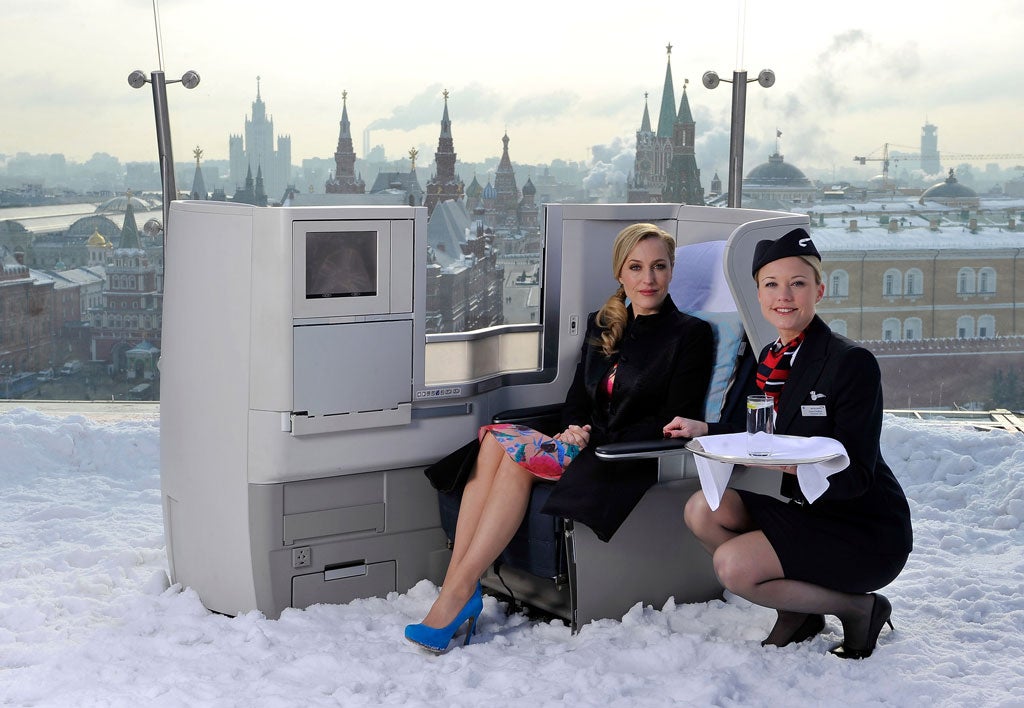Simon Calder: In it for the long haul, for three and a half hours
The man who pays his way

You may neither know nor care about the differences between an Airbus A300 and a Boeing 767. But you probably have a sense about the appropriate scale of aircraft: short flight equals small plane; long flight equals big plane.
The two extremes of British aviation demonstrate the point. The world's quickest scheduled flight, from Papa Westray to Westray in Orkney, takes two minutes in a tiny nine-seater. The longest-duration non-stop trip to London, 14 hours from Singapore, is aboard an Airbus A380 – the world's biggest passenger jet.
True, the calibration sometimes goes awry. The "big twin" Airbus A330 was designed to move several hundred people many thousands of miles. But this weekend, Monarch's A330 will be shuttling skiers from Gatwick to Geneva and Grenoble and back, hops of just an hour.
Conversely, some niche transatlantic routes, such as Heathrow to St John's in Canada and London City to New York, use the tiddliest Airbuses. But British holidaymakers have grown accustomed to an informal dividing line. On a trip of up to six hours you can expect a narrow-bodied plane with high-density seating. For more extended trips you are likely to fly on a wide-bodied jet with more room to stretch out for the long haul.
There are good reasons for the distinction. Three key factors reach their limits at the six-hour mark: the maximum crew hours for a one-day round-trip (which help the economics), the range with a full payload, and passenger tolerance of a cramped cabin. This is perfectly demonstrated by easyJet's longest flight, from Sharm el Sheikh to Manchester – a trip of 2,551 miles.
Starting tomorrow, the assumptions are challenged – on a route exactly 1,000 miles shorter than that 2,551-mile benchmark. BA's morning flight to Moscow switches from a short-haul Boeing 767 to a long-haul 747. The Jumbo flies from Heathrow to Domodedovo airport in the Russian capital with four classes – including first class, for which the one-way fare is £2,183.
The journey time on the trip connecting Trafalgar Square with Red Square is barely three and a half hours. In first class, that represents an astonishing £10 per minute – more even than that Orkney hop (£8.50), though the in-flight catering and entertainment are superior.
Who would possibly pay a premium for the extra legroom of World Traveller Plus, let alone the flat beds of Club World and First Class, on a trip shorter than the hop to Istanbul or Tenerife? BA clearly believes there is a market for luxury long-haul standards on such a short-haul trip.
Every economy-class traveller planning a trip to Russia's capital stands to benefit. The move sharply increases the number of seats from London to Moscow, on which BA competes with Aeroflot, BMI and Transaero.
Any rise in economy fares from the current £287 is unlikely, even though passengers in the cheapest seats on the 747 will get a much-improved product. So you are able to travel to Russia with style. Effectively, the high spenders up front are subsidising the people in the cheap seats. But they get a baggage allowance the size of a Russian bear: 119kg in hold luggage and cabin baggage. Add the laptop/briefcase/ handbag that is also permitted, and the allowance equals that for the entire Orkney flight.
'Intelligent misuse' makes sense for some carriers
Cathay Pacific has a term for deploying large, comfortable planes on trips of just an hour or two: "intelligent misuse" of long-haul aircraft.
The carrier mostly flies big Boeings and Airbuses from its Hong Kong HQ to Europe, North America and Australasia. But the flying patterns for these journeys mean the schedulers can fit in extra flights around Asia of a couple of hours each way, which is more profitable than to have the planes (and pilots) standing idle.
So, from Hong Kong to Taipei or Bangkok, Cathay offers more comfort than other airlines that are charging the same fares.
Sometimes, long-haul planes are used unintelligently. Last time I flew Olympic between Heathrow and Athens – a route the Greek carrier has now dropped – the plane used both ways was a Boeing 747, with only a few dozen passengers on board: flying beyond the airline's means, you could call it.
Barmiest of all was an Emirates Boeing 777 from Heathrow to Gatwick, but that was due to spectacular operational misadventure rather than any attempt to outrun the M25.
Subscribe to Independent Premium to bookmark this article
Want to bookmark your favourite articles and stories to read or reference later? Start your Independent Premium subscription today.

Join our commenting forum
Join thought-provoking conversations, follow other Independent readers and see their replies